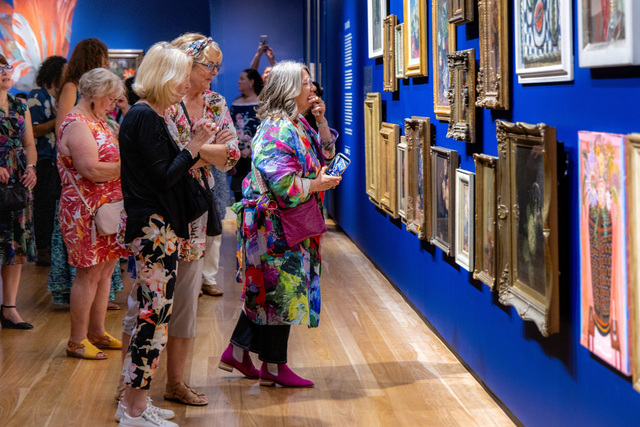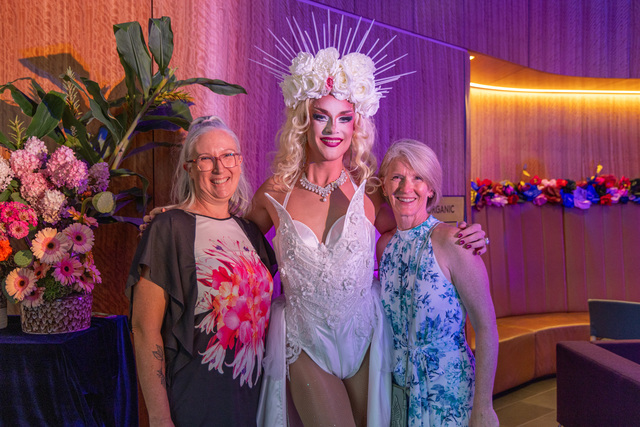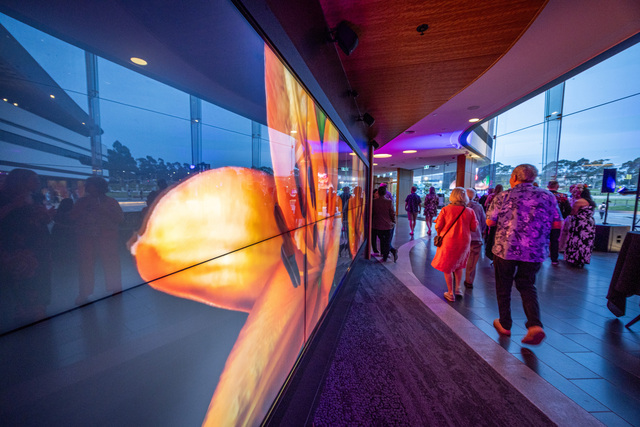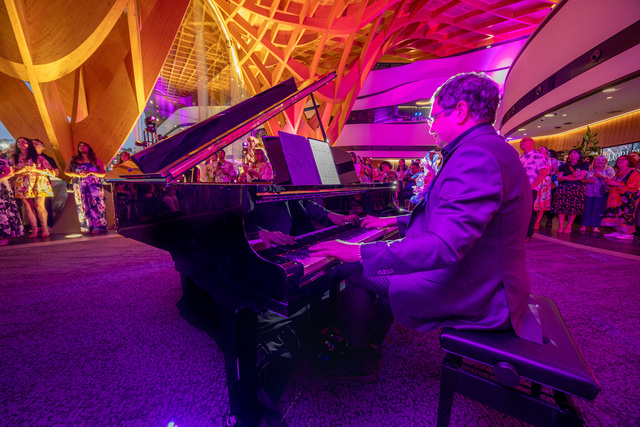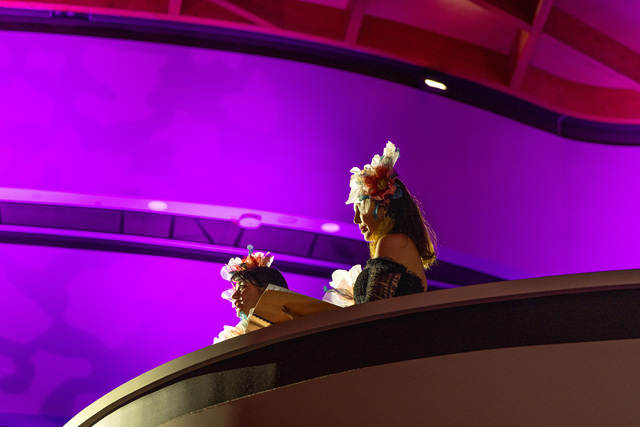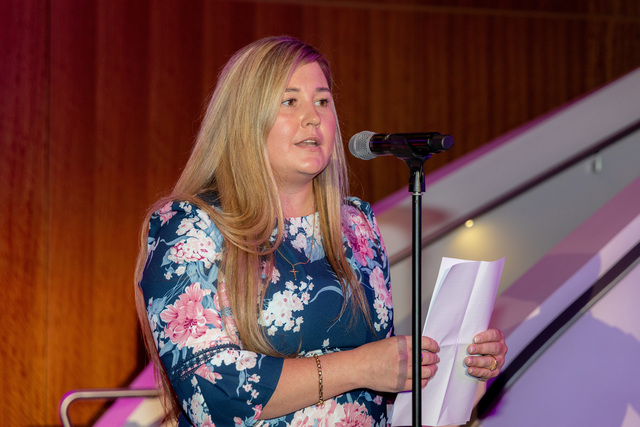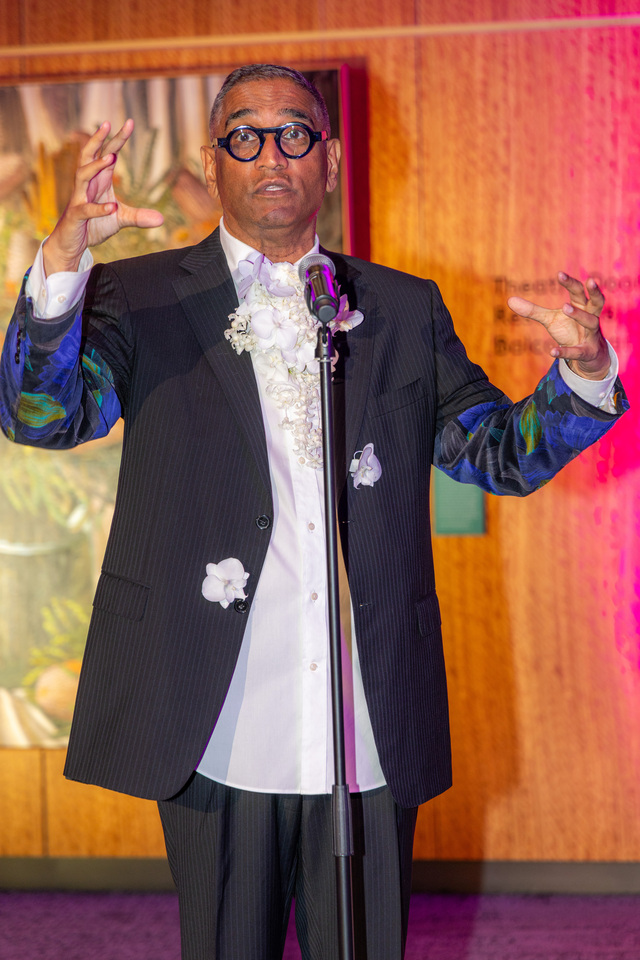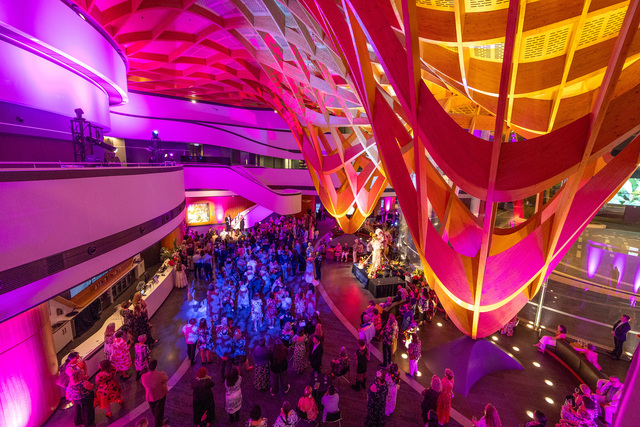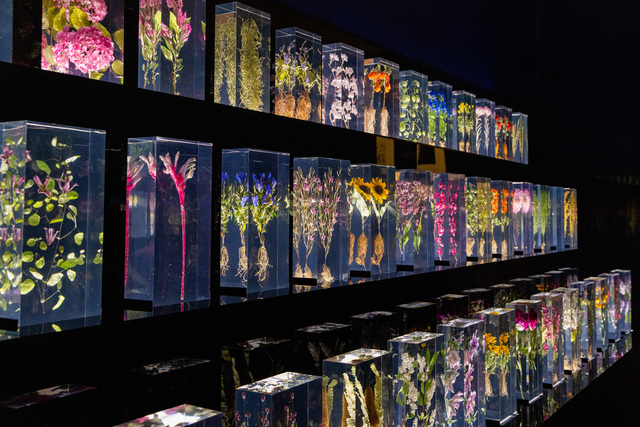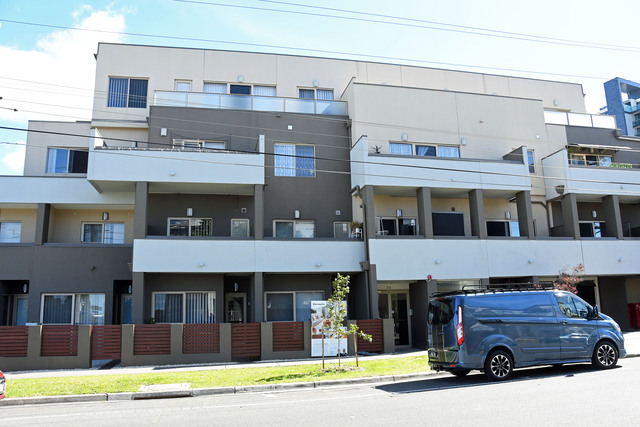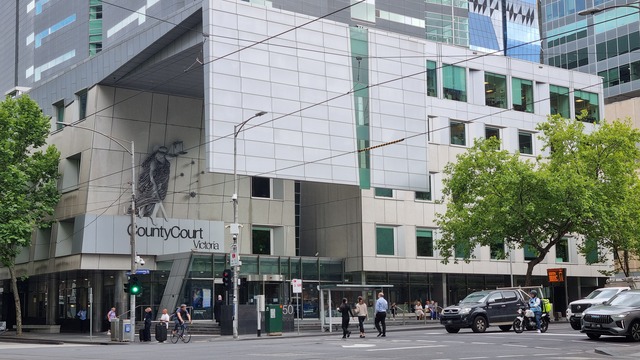The Floribunda Gala and opening was in full swing at Bunjil Place on Friday, 28 March, as people donned their flower best, eager to step foot into the gallery.
The gallery itself opened at 8pm, with patrons greeted by a purple-lit foyer, drinks and canapes, and intricate artwork by local Casey artists as a taste of the big reveal.
Multiple councillors were present for the event, with Cr Kim Ross, Cr Shane Taylor, Cr Jennifer Dizon, Cr Lynette Pereira, and Deputy Mayor Melinda Ambros delivering a welcome reception and speech.
Prior to her speech, she told Star News journalists that the gallery featured “priceless pieces”, and was astounded to have something of its calibre so close to home.
“The fact that we have something like this in our backyard is beautiful,” she said.
“It’s like, when you walk in there, you feel like you’re in a completely different world.”
The order of business was straightforward: visitors were given tickets to the piano room, which featured performances at set times, with the first sessions also kicking off at 8pm.
However, these same visitors were handed a pleasant surprise, as two opera singers took stage at the bend of the foyer stairs.
With the stagelights on them, their voices soared through the air, echoing through the walls and bouncing from one glass pane to the other, reverberating in every audience’s heart.
The verses of Leo Delibes’ Lakme, or the Flower Song, were sang, as all eyes were drawn to the women, with none daring to look away.
David Sequeira, Floribunda’s curator, spoke in length about the intricacies of the gallery, what the flowers meant, and what they stood for so that each person could set their eyes on it.
“Why have flowers persisted for millennia in the lives of human beings? I think artists are fascinated by them because flowers, they don’t live very long,” Sequeira said.
“They’ve got this very short moment of live, a short burst of it, and we use them for make-ups, break-ups, dreams, births, deaths, we use them in all these spaces.”
The gallery opened, as Sequeira described, like a rose petal, introducing patrons to a strong start, with a wall on their left covered in flower portraits and a troupe of mannequins donned in floral garments to their right.
Each painting on the wall spoke a different language and flowed with a different essence, with every flower a depiction of one emotion and then another.
Some were bespoke, some were fluid, and some were as still as a photograph.
Sequeria, who wandered the gallery as many admired the works, said that “it’s a joy for me to see this project come to fruition”.
“I’ve been sort of the captain of the helm and working with an extraordinary team of people from the NGV and Bunjil to bring over 150 works out here.
“And when I see it all out here, in one room, it’s like all the objects, all the works of art, in harmony together to create this multifaceted understanding of the place of flowers in people’s lives,” he said.
The final flourish sat in the middle of the gallery, a cave of resin-embalmed flowers, numbered in the dozens, inviting the people in like a temptation that could not be satiated.
A work by Azuma Makoto, called Block Flowers, they sat in rows, suspended in the air, still as a rock, with their beauty preserved for all to see.
On the other side, more portraits of flowers donned the walls, some in graphite, some in paint, then a transition to vases, clothing and textiles.
The night went on, with many more eager to see the displays, lining up in droves with some craning their necks to take a peek.
The piano room continued its melodies, and many mingled with one another, basking in the atmosphere of everything floral.

